This visual guide to gemstones provides a wealth of information about gemstones and minerals plus the different types of stones that are used in jewellery making. As well as providing details about gemstone properties, including gemstone care, gemstone characteristics, gemstone composition, gemstone colour variations, gemstone hardness, gemstone names, and global sources, this gemstone chart aims to provide a brief outline of gemstone history in jewellery making. In addition it aims to provide more subjective information relating gemstone meanings and their role as birth, anniversary and zodiac stones, and as such the gemstone therapeutic properties and healing qualities that have been attributed to them.
To allow for the continuing growth of this gemstone and minerals dictionary it has been presented in two cross referenced sections A to J and K to Z. A helpful jump to tool has been presented at the top and bottom of this gemstone guide to help you find the information you need quickly and efficiently.
It should not be seen as an exhaustive list of gemstones or minerals! However it should go some way to helping you in identifying gemstones and understanding what is a gemstone.
The difference between natural, synthetic, and simulated gemstones
Natural: As their name suggests, natural gemstones are those that occur in nature. Since natural gemstones are often far from perfect when it comes to colour or clarity, these features are often enhanced by using heat, chemicals, irradiation, or laser treatment.
Synthetic: Contrary to what many people think, synthetic gemstone does not mean fake. Synthetic or reconstructed gemstones are created in a laboratory under high pressure by using the same compounds that make up natural gemstones. They are identical to their natural counterparts in terms of chemical composition and physical properties.
Simulated: Simulated gemstones are made of glass or resin and resemble the appearance of a natural gemstone but do not have the same chemical and physical properties.
Jump to section: A B C D E F G H I J or K to Z
A
ABALONE
With Paua and Red illustrated below:


-
Gemstone Physical Composition: Abalones are members of the Gastropoda class of mollusks that have a one-piece shell. Abalone shells have a dichroic, tortoise shell like appearance. They are a source of mother of pearl.
- Gemstone Physical Characteristics:
-
Gemstone Colour Variations: The Paua shell is part of the abalone family, but has deeper colours of blue, green, and purple.
-
Gemstone Sources: Australia, Japan and the United States.
- Gemstone Hardness:
- Gemstone History:
- Gemstone Uses:
- Gemstone Care:
-
Gemstone Therapeutic Properties: The mother of pearl is used for the treatment of high blood pressure, dizziness, and heart palpitations
-
Birthstone: n/a
-
Zodiac Sign: n/a
AGATE
With Branded, Blue Lace, Condor, Dendritic, Fire, Green, Honey Brush, Moss, Polka Dot, Red, Rossette and Scottish Agates illustrated below:












-
Gemstone Physical Composition: Agate is a member of the Chalcedony or Quartz family characterized by its fineness of grain, brightness of colour, and dramatic banding. It consists of amorphous or cryptocrystalline silica alongside the aforementioned mineral Chalcedony. They are typically associated with volcanic rocks or ancient lavas where they occur as nodules forming from solutions of silica at relatively shallow depths and low temperatures. They are extremely sensitive to the physical and chemical conditions around them forming in concentric layers and filling cavities in a host rock. The results are round bands similar to the rings in tree trunks, whilst also appearing as eyes, scallops, or as landscapes with dendrites that look like trees.
-
Gemstone Physical Characteristics: Hard, durable stones which can be dyed, sliced very thinly, can be highly polished, occur in a very wide variety of colours, and are generally affordable. Varies from extremely translucent to opaque.
-
Gemstone Colour Variations: Ranges from transparent to opaque and all colours in between including blue, brown, grey, green, purple, and white.
-
Gemstone Sources: Africa, Asia, Brazil, Canada, Egypt, England, Germany, India, Italy, Mexico, Nepal, and the United States.
-
Gemstone Hardness: 6.5 to 7 on Mohs Scale of Hardness.
-
Gemstone History: The word Agate comes from the Greek name for a stone originally found in the Achates River in Sicily (now known as the Drillo River). Agate has been found with the remains of Stone Age man in France from as early as 20,000-16,000 B.C. The Egyptians used agates prior to 3000 B.C. for talismans, amulets, rings, seals, and vessels. Early civilizations used eye beads made from carved agate discs to protect them from evil and to bring good luck.
-
Gemstone Uses: Their fluid forms lend themselves to attractive cabochons and similar flat or rounded jewelry formats.
-
Gemstone Care: It is often dyed or stained in a wide range of colours using colour-fast aniline dyes. These dyes can fade when exposed to sunlight for long periods of time.
-
Gemstone Therapeutic Properties: Soothing both mind and body as well as improving memory, concentration and perspective. With benefits for courage, honesty and stamina. It is also said to help discern truth, prevent insomnia, and is a strong emotional healer. Individual Agate types have their own specific properties.
-
Birthstone: September.
-
Zodiac Sign: Gemini and Virgo.
AMAZONITE
With Chinese, Pale Green (with grey inclusions) and Russian Amazonite illustrated below:



-
Gemstone Physical Composition: Amazonite is blue-green variety of microcline (a feldspar mineral). Its brilliant colour is attributed to the presence of lead or iron in its composition.
-
Gemstone Physical Characteristics: It is an opaque to translucent stone, often found with white, yellow or grey inclusions and a silky lustre or silvery sheen. The most prized colour is a rich clear watery blue, with large clear stones amongst the most valuable semi-precious gemstones available.
-
Gemstone Colour Variations: It varies in colour from greenish blue to light blue, to soft green, pink and yellow.
-
Gemstone Sources: Russia and the United States.
-
Gemstone Hardness: 6 on Mohs Scale of Hardness.
-
Gemstone History: Its name is derived from the Amazon River, although no deposits have actually been found there! The most sought after amazonite historically come from Russia, where deposits are found in granite along the Ilmen Mountains. Europeans familiar with the Russian stone confused it with another green stone from South America’s Amazon Basin, which turned out to be a form of Nephrite Jade but b then the name had stuck. The Pike’s Peak district of Colorado, USA, became the most important source of amazonite after 1876 eventually put competing Russian mineral vendors out of business.
- Gemstone Uses:
-
Gemstone Care: Because Amazonite is slightly soft, and can be scratched easily by other stones, it is wise to store Amazonite separate from other gems. It is also sensitive to chemicals, abrasives, acids, ammonia, and heat. Never use hot water, a steamer, or ultrasonic cleaners with this stone. Use mild soap and room temperature tap water with a soft cloth so you do not diminish the luster of the gemstone.
-
Gemstone Therapeutic Properties: Encourages truth, sincerity, honour, self-love, communication, eloquence, integrity, trust, clairvoyance, clarity, prophecy and openness. Believed to improves one’s married life, calms nerves, and enrich creativity.
-
Birthstone: n/a
-
Zodiac Sign: n/a
AMBER
With Baltic, Black Sarawak, Chiapas, Dominican Blue, Golling, Lee Creek, New Jersey, and Sabah Ambers illustrated below:








-
Gemstone Physical Composition: Amber is fossilized tree resin, found in rocks from recent times back to the Carboniferous Period more than 300 million years ago. However, most amber is found in rocks younger than Jurassic Period or about 140 million years ago. It is indicative of an ancient tropical forest and in its fresh form, resin has been known to collect insects, moss, lichen or leaves in its sticky clutches, preserving them in perfect splendor for thousands of years.
-
Gemstone Physical Characteristics: Amber is generally yellow or yellow brown and translucent.
-
Gemstone Colour Variations: Brown, golden, and green and yellow-orange,
-
Gemstone Sources: Dominican Republic, Poland and Baltic Russia are considered primary sources whilst Canada, Czech Republic, Columbia, France, Germany, India, Italy, Lebanon, Mexico, Myanmar, Romania, Spain and the United States are also notable.
-
Gemstone Hardness: 2 to 2.5 on Mohs Scale of Hardness.
-
Gemstone History: Amber has been discovered in archaeological findings from ancient European cultures dating back to the 13th millennium B.C. Prized by the ancients for having captured the warmth of the sun, it was often cut into animal figures in the belief that it would make them easier to hunt. Amber jewellery was popular in ancient Roman and was more expensive than the most valuable commodities, including slaves. The 17th century was the golden age of amber craft with the city of Gdansk in Poland as its epicentre. During this period, notable craftsmen and artists created all manner of decorative objects large and small for royalty and the wealthy of Europe.
-
Gemstone Uses: It is a beautiful stone that is cut and polished and used as a valuable gemstone. It is very light in weight which allows it to be used in a large jewellery piece without discomfort. It can contain preserved insects and other animals and plants that are tens of millions of years old. These fossil inclusions usually add to amber’s unique look and in many cases greatly increase its value. Amber is often imitated by plastics, coloured glasses and some modern tree resins. However, its hardness is usually greater, and it is tougher than other resins. Its low specific gravity (amber can float on salt water) and inclusions can distinguish it from plastics and glasses.
-
Gemstone Care: Due to its porous nature, sweat and skin oils can be absorbed, clouding the surface of the amber. Avoid the use of jewelry cloths that are impregnated with polishing compounds, as these will cloud and scratch the surface. Ultrasonic cleaners should never be used as they can shatter the stone.
-
Gemstone Therapeutic Properties: Amber attracts warm, loyal, and generous people into the life of the wearer whilst enhancing logic and wit in difficult situations. It is also said to enhance artistic endeavours, help overcome obstacles and bring relief from melancholy and grief.
-
Birthstone: n/a
-
Zodiac Sign: Taurus.
AMETHYST
With a typical example of African, Brazilian, Deep Purple Amethyst illustrated below:



-
Gemstone Physical Composition: A semi precious crystalline Quartz stone whose distinctive colour is caused by the presence of both iron and manganese at the point of formation. It is a formed in silica-rich liquids deposited in gas cavities, or geodes, in lava. It occurs in crystalline masses, but the crystals are generally not well developed, so they are generally found as clusters of crystal points. It is closely related to Citrine which is created when Amethyst is exposed to heat when forming. When Amethyst and Citrine are found together it is called Ametrine and is very sought after.
-
Gemstone Physical Characteristics: Always purple, lilac or mauve in colour with occasional red dots or blues hues.
-
Gemstone Colour Variations: n/a
-
Gemstone Sources: Australia, Brazil, Canada, India, Russia, South Korea and the United States.
-
Gemstone Hardness: 7 on Mohs Scale of Hardness.
-
Gemstone History: The stone’s name is derived from the Greek word amethystos, meaning ‘not drunken’, as it is thought people of ancient times believed it to protect the wearer from drunkenness – though a more likely explanation is that the Greeks were referring to the almost wine-like colour of some stones that they may have encountered. Amethyst was used as a gemstone by the ancient Egyptians and was largely used in antiquity for small, engraved gemstones or intaglio. Medieval European soldiers wore amethyst amulets as protection in battle and amethyst beads have been found in Anglo-Saxon graves in England. In terms of value Amethyst used to sit alongside Diamonds, Sapphires, Rubies and Emeralds in terms of value but with the discovery of sizeable deposits in places like Brazil its price has fallen alongside its scarcity.
-
Gemstone Uses: Often cut gems of amethyst are graded using the terms: Siberian, Uruguayan or Bahrain to represent High, Medium and Low-grade samples respectively. This is regardless of the actual source. Because of the patchiness of the colour distribution in the crystals, Amethyst is often cut as brilliant round cuts to maximize the colour. Other cuts are used when the colour is better distributed.
- Gemstone Care:
-
Gemstone Therapeutic Properties: Used for meditation, cleansing, whilst giving relief from insomnia, grief, and addictions. The Greeks and Romans used it as way to remain sober.
-
Birthstone: February (Wisdom, spirituality, sobriety, security).
-
Zodiac Sign: Aquarius and Gemini.
APATITE
With Asparagus Stone (Spanish), Blue, Cats Eye and Violet Apatite illustrated below:




-
Gemstone Physical Composition: This is a group of phosphate minerals, usually referring to hydroxyapatite, fluorapatite, chlorapatite and bromapatite. It is found in igneous sedimentary and metamorphic rocks. This mineral is also found in the teeth and bones of humans, fish, birds, cows, and other vertebrate animals living and extinct. It typically grows in hexagonal shapes.
-
Gemstone Physical Characteristics: A soft stone which can also be brittle. It is usually found in tones of green.
-
Gemstone Colour Variations: Typically green but also found in browns, blues, pinks, violets and yellows.
-
Gemstone Sources: Brazil, Burma, Canada, Czech Republic, Germany, India, Madagascar, Mexico, Mozambique, Norway, South Africa, Spain, Sri Lanka, and the United States.
-
Gemstone Hardness: 5 on Mohs Scale of Hardness.
-
Gemstone History: In the last 100 years this mineral has found greater use as a fertilizer or as a means of preserving detail in the structure of fossils than it has as a of beauty. Prior to that its history remains vague. The name Apatite comes from a Greek word meaning ‘to deceive’ in allusion to its similarity to other more valuable minerals such as Olivine, Peridot and Beryl.
-
Gemstone Uses: Because of its soft and brittle nature Apatite is only occasionally used as a gemstone with transparent stones of clean colour usually being faceted whilst chatoyant specimens are cut for cabochons. Chatoyant stones are known as cat’s-eye apatite and transparent green stones are known as asparagus stone with the blue stones called Moroxite. It is primarily used as a source of phosphorous to be used in fertilizer.
- Gemstone Care:
-
Gemstone Therapeutic Properties: Encourages communication, concentration and clarity of thought. It increases confidence and your ability to learn as well as improving co-ordination. It has also been used as a hunger suppressant.
-
Birthstone: n/a
-
Zodiac Sign: n/a
AQUAMARINE
With Light Blue Aquamarine illustrated below:

-
Gemstone Physical Composition: Belongs to the Beryl gemstone family and has a more evenly distributed colour than its close relative the emerald. Aquamarine is coloured by trace amounts of iron.
-
Gemstone Physical Characteristics: Gem quality aquamarine is usually free of inclusions and possesses a superior brilliance, while bead grade aquamarine tends to have interesting inclusions and opaque areas. The more intense the colour of this stone, the higher its value.
-
Gemstone Colour Variations: A brilliant clear gemstone that ranges from blue to blue green.
-
Gemstone Sources: The best quality stones come from Brazil, but they are also found in Afghanistan, Nigeria, Madagascar, Mozambique, Pakistan, Russia, Zambia, and the United States.
-
Gemstone Hardness: 7.5 to 8 on Mohs Scale of Hardness.
-
Gemstone History: Legend suggests that Aquamarine was found in mermaids’ treasure chests, making it renowned as a lucky stone for sailors, with its name derived from the Latin words for water and sea.
-
Gemstone Uses: Gem quality Aquamarine is usually free of inclusions and possesses a superior brilliance, while bead grade Aquamarine tends to have interesting inclusions and opaque areas. The more intense the colour of this stone, the higher its market value. It is a hard gemstone, which makes it the perfect choice for jewellery that is worn frequently.*
-
Gemstone Care: Most gem Aquamarines have been heat treated to produce the popular blue green colours from less desirable yellow or pale stones.
-
Gemstone Therapeutic Properties: Denotes hope, health and youth. It is said to ward off seasickness and to safeguard travellers particularly over water and as such has been a favourite of mariners through the ages. In addition it helps relieve anxiety, fear and restlessness.
-
Birthstone: March (Beauty, honesty, loyalty, happiness).
-
Zodiac Sign: Pisces.
ARAGONITE
With Blue, Brown and Orange Agates illustrated below:



-
Gemstone Physical Composition: Aragonite is a polymorph of Calcite, which means that it has the same chemistry as Calcite but it has a different structure, and more importantly, different symmetry and crystal shapes.
-
Gemstone Physical Characteristics: Aragonite is a constituent of many sea creatures’ shell structures. Most bivalve animals and corals secrete Aragonite for their shells and pearls are composed of mostly Aragonite. The pearlization and iridescent colours in seashells such as Abalone are made possible by several minute layers of Aragonite. Other environments of formation include hot spring deposits, cavities in volcanic rocks, caves and mines.
-
Gemstone Colour Variations: Can be white or colourless or with usually subdued shades of red, yellow, orange, brown, green and even blue. Lustre is vitreous to dull.
-
Gemstone Sources: Austria, England, Germany, France, Italy, Mexico, Morocco, Namibia, Scotland, Spain and the United States.
-
Gemstone Hardness: 3.5 to 4 on Mohs Scale of Hardness.
-
Gemstone History: Aragon in Spain is where Aragonite was first discovered and from where it gets its name.
-
Gemstone Uses: Used in cement and in steel production, beads, ornamental carvings and as mineral specimens.
- Gemstone Care:
- Gemstone Therapeutic Properties:
-
Birthstone: n/a
-
Zodiac Sign: n/a
AVENTURINE
With Blue, Green and Red Aventurine illustrated below:



-
Gemstone Physical Composition: Another member of the Chalcedony or Quartz family. Easily identifiable by its colour and the flecks within the stone produced by mineral inclusions most usually iron oxide (hematite), or green mica (fuchsite). Its granular appearance and translucence are its most striking characteristics. Most aventurine is naturally reddish brown or yellow, though a green variety is also known.
-
Gemstone Physical Characteristics: It is most commonly found in a reddish brown or yellow colour though a forest green colour is also found..
-
Gemstone Colour Variations: Also found in blue, brown, grey, orange, white and yellow variations.
-
Gemstone Sources: Brazil, China, India, Japan, Russia, Tanzania, and the United States.
-
Gemstone Hardness: 6.5 on Mohs Scale of Hardness.
-
Gemstone History: The mineral is named for its resemblance to the Aventurine glass of Venice, Italy created around the 1700s. This glass is said to have been named when a Murano workman accidentally dropped copper filings into molten glass, creating an attractive new material. This glass was named Aventurino for the Italian word Aventura which translates as ‘by chance’.
-
Gemstone Uses: The green Aventurine found on the market, as well as the red and blue, is almost certainly dyed to achieve its colour.
- Gemstone Care:
-
Gemstone Therapeutic Properties: Said to increase libido, reduce stress, and strengthen blood and muscle tissue. It is also seen as a talisman for gamblers.
-
Birthstone: n/a
-
Zodiac Sign: n/a
AZURITE
With an example of deep blue Azurite with small Malachite inclusions illustrated below:

-
Gemstone Physical Composition: Azurite is a copper carbonate hydroxide. Green malachite is closely associated with Azurite in many ways. Not only do they frequently occur together but they also have very similar chemical make up.
-
Gemstone Physical Characteristics: Is a very popular mineral because of its unparalleled colour, a deep blue called ‘azure’, hence its name. The colour is due to the presence of copper and the way it combines with carbonate and hydroxyls. Transparent if in thin crystals, otherwise translucent to opaque.
-
Gemstone Colour Variations: Azure, deep blue or pale blue if found in small crystals or crusts.
-
Gemstone Sources: Australia, Congo, Europe, Mexico, Namibia, Morocco, Namibia, Mexico, Morocco, and the United States.
-
Gemstone Hardness: 3.5 to 4 on Mohs Scale of Hardness.
-
Gemstone History: Azure is derived from the Arabic word for ‘blue’.
-
Gemstone Uses: Ornamental stone, pigment, minor ore of copper, and jewellery.
- Care:
-
Gemstone Therapeutic Properties: Augments clear understanding, cleansing, healing, transformation, perspective, purification, patience, kindness, intuition, prophecy and truth.
-
Birthstone: n/a
-
Zodiac Sign: n/a
B
BLOODSTONE


-
Gemstone Physical Composition: Bloodstone is opaque, green, spotted variety of Chalcedony.
-
Gemstone Physical Characteristics: The dark green of Bloodstone is spotted with red because of the presence of iron oxides. These distinctive spots seem to resemble blood, thus giving the stone its name.
- Gemstone Colour Variations:
-
Gemstone Sources: Australia, Brazil, China, India, and the United States.
- Gemstone Hardness:
- Gemstone History:
- Gemstone Uses:
- Gemstone Care:
-
Gemstone Therapeutic Properties: Brings greater consciousness, harmony and serenity. It helps overcome anger and enables forgiveness as well as sharpening perception and enhancing telepathy. It eases emotional and physical stress, assists in meeting and conquering challenges, and promotes safe journeys. It invigorates and oxygenates blood stream as well as helping to balance iron deficiencies. Bloodstone also benefits the adrenal gland and addresses bladder problems.
-
Birthstone: March (Endurance).
-
Zodiac Sign: Aquarius and Pisces.
BRONZITE

- Gemstone Physical Composition:
- Gemstone Physical Characteristics:
- Gemstone Colour Variations:
- Gemstone Sources:
- Gemstone Hardness:
- Gemstone History:
- Gemstone Uses:
- Gemstone Care:
- Gemstone Therapeutic Properties:
-
Birthstone: n/a
-
Zodiac Sign: n/a
C
CALCITE
With Blue, Golden Mangano, and Yellow Calcite illustrated below:




-
Gemstone Physical Composition: Calcite is an anhydrous carbonate, and one of the most widely distributed minerals on the Earth’s surface. It is a common constituent of sedimentary rocks.
-
Gemstone Physical Characteristics: In crystallized form, Calcite has a vitreous lustre.
-
Gemstone Colour Variations: Calcite is colourless or white but can become green, pink, peach, golden, orange, yellow, red, blue, grey, or black when other compounds blend with it during formation.
- Gemstone Sources:
-
Gemstone Hardness: 3 on Mohs Scale of Hardness.
- Gemstone History:
- Gemstone Uses:
- Gemstone Care:
- Gemstone Therapeutic Properties:
-
Birthstone: n/a
-
Zodiac Sign: n/a
CARNELIAN or CORNELIAN

-
Gemstone Physical Composition: Carnelian is a variety of the silica mineral chalcedony coloured by impurities of iron oxide.
- Gemstone Physical Characteristics:
-
Gemstone Colour Variations: The colour can vary greatly, ranging from pale orange to an intense almost black colouration. Brighter colours are usually the result of heat treatment.
-
Gemstone Sources: Brazil, India, and Uruguay.
-
Gemstone Hardness: 7 on Mohs Scale of Hardness.
-
Gemstone History: The name carnelian is said to be derived from the Latin word carnis, or ‘flesh’, due to its colour.
- Gemstone Uses:
- Gemstone Care:
-
Gemstone Therapeutic Properties: It brings good luck, happiness, success, and prosperity. Increases awareness and improves memory. It also helps settle disputes and enhances accomplishments. Carnelian energizes the blood, protects against illness and is generally beneficial for tissue regeneration, infections, and inflammations.
-
Birthstone: July (Luck, safety)
-
Zodiac Sign: Virgo.
CHALCEDONY
With Blue, Grey and White Calcedony illustrated below:



-
Gemstone Physical Composition: Chalcedony is a form of quartz crystal.
- Gemstone Physical Characteristics:
-
Gemstone Colour Variations: Brown, blue, black and white to grey.
- Gemstone Sources:
-
Gemstone Hardness: 7 on Mohs Scale of Hardness.
- Gemstone History:
- Gemstone Uses:
- Gemstone Care:
-
Gemstone Therapeutic Properties: In general, Chalcedony gives success in lawsuits, good health, safe travels, and protects against harmful spirits. However, there are many varieties of Chalcedony each with its own particular properties.
-
Birthstone: n/a
-
Zodiac Sign: n/a
CHLORITE

- Gemstone Physical Composition:
-
Gemstone Physical Characteristics: Translucent to opaque.
-
Gemstone Colour Variations: Lilac coloured to violet.
- Gemstone Sources:
- Gemstone Hardness:
-
Gemstone History: It was named after a river in Siberia, Russia and was recognized in 1978 as an independent mineral.
- Gemstone Uses:
- Gemstone Care:
-
Gemstone Therapeutic Properties: It can be used to treat disorders of the eyes and heart, to allay headaches, and general aches and pains. It is said to improve degraded conditions of the liver and the pancreas, and to stimulate and regulate the blood pressure and pulse rate.
-
Birthstone: n/a
-
Zodiac Sign: n/a
CHRYSOBERYL

- Gemstone Physical Composition:
- Gemstone Physical Characteristics:
- Gemstone Colour Variations:
- Gemstone Sources:
- Gemstone Hardness:
- Gemstone History:
- Gemstone Uses:
- Gemstone Care:
- Gemstone Therapeutic Properties:
-
Birthstone: n/a
-
Zodiac Sign: n/a
CHRYSOCOLLA

-
Gemstone Physical Composition: A blue green member of the quartz family.
- Gemstone Physical Characteristics:
- Gemstone Colour Variations:
- Gemstone Sources:
- Gemstone Hardness:
- Gemstone History:
- Gemstone Uses:
- Gemstone Care:
-
Gemstone Therapeutic Properties: It is associated with tranquility, serenity, peace, wisdom, intuition, patience, nurturing, acceptance, tolerance, unconditional love, calmness, meditation, honesty, hope, intimacy, gentleness and sensitivity.
-
Birthstone: n/a
-
Zodiac Sign: n/a
CHRYSOPRASE
With standard and Citrine Chrysoprase illustrated below:


-
Gemstone Physical Composition: Another member of the Quartz family and a variety of Chalcedony. Its colouring comes from the presence of nickel.
-
Gemstone Physical Characteristics: It is a translucent stone and usually a very bright apple green colour.
-
Gemstone Colour Variations: Dark green.
-
Gemstone Sources: Australia, Austria, Brazil, Germany, Poland, Tanzania, Russia and the United States.
-
Gemstone Hardness: 6 to 7 on Mohs Scale of Hardness.
-
Gemstone History: Used by both the Greeks and Romans as a decorative stone.
- Gemstone Uses:
-
Gemstone Care: May fade in sunlight.
-
Gemstone Therapeutic Properties: It helps to rid a person of negative thoughts and irritability whilst providing guidance in questions of courage and self expression. It is also a bringer of happiness, adaptability, a sense of humour whilst also alleviating fears and encouraging enthusiasm. Bestows a cleansing and calming affect.
-
Birthstone: May (Fertility, secrecy).
-
Zodiac Sign: n/a
CHRYSOTINE

- Gemstone Physical Composition:
- Gemstone Physical Characteristics:
- Gemstone Colour Variations:
- Gemstone Sources:
- Gemstone Hardness:
- Gemstone History:
- Gemstone Uses:
- Gemstone Care:
- Gemstone Therapeutic Properties:
-
Birthstone: n/a
-
Zodiac Sign: n/a
CITRINE

-
Gemstone Physical Composition: Citrine is a clear yellow variety of Quartz. It occurs in proximity to Amethyst and the two can be found mixed as Ametrine. In fact much of the citrine on the market today is actually heat-treated amethyst. All that is required is for a kiln to reach and hold a specific temperature for long enough and a purple amethyst will turn to citrine. Natural citrine is not common and occurs in lighter hues than the heat-treated material. It is found in only small deposits and is therefore quite rare.
-
Gemstone Physical Characteristics: A clear yellow gemstone which ranges from light to dark.
-
Gemstone Colour Variations: Variations across the yellow colour spectrum – ranging from pale yellow to yellow brown, and occasionally deep red.
-
Gemstone Sources: Brazil, France, Hungary, Russia and Spain.
-
Gemstone Hardness: 7 on Mohs Scale of Hardness.
-
Gemstone History: The name citrine comes from the French citron, or ‘lemon’, after its colour.
- Gemstone Uses:
- Gemstone Care:
-
Gemstone Therapeutic Properties: Good for digestion as well as the heart, liver and muscles. It is said to encourage clarity of thought and creativity. It is energizing, invigorating, and positive. It increases motivation and relieves feelings of inertia.
-
Birthstone: November (Hope, cheerfulness, youth, health, fidelity).
-
Zodiac Sign: Scorpio.
CORAL
With Apple, Fossil and Red Coral illustrated below:



-
Gemstone Physical Composition:Corals are marine invertebrates within the class Anthozoa of the phylum Cnidaria. They typically live in compact colonies of many identical individual polyps. Corals species include the important reef builders that inhabit tropical oceans and secrete calcium carbonate to form a hard skeleton.
-
Gemstone Physical Characteristics:Corals' many colours give it appeal for necklaces and other jewelry. Intensely red coral is prized as a gemstone. Sometimes called fire coral, it is not the same as fire coral. Red coral is very rare because of overharvesting.
-
Gemstone Colour Variations:Colours range from pink to vibrant red. Sometimes dyed to enhance the redness.
-
Gemstone Sources:Corals are major contributors to the physical structure of the coral reefs that develop in tropical and subtropical waters, such as the enormous Great Barrier Reef off the coast of Queensland, Australia.
- Gemstone Hardness:
-
Gemstone History:Always considered a precious mineral, "the Chinese have long associated red coral with auspiciousness and longevity because of its colour and its resemblance to deer antlers (so by association, virtue, long life, and high rank".
- Gemstone Uses:
-
Gemstone Care: Keep away from harsh chemicals and chlorine in swimming pools.
- Gemstone Therapeutic Properties:
-
Birthstone: n/a
-
Zodiac Sign: n/a
CORUNDUM

-
Gemstone Physical Composition: Corundum is the crystalline form of aluminium oxide and one of the basic rock-forming minerals. Corundum is naturally clear or coloured by impurities.
- Gemstone Physical Characteristics:
- Gemstone Colour Variations:
- Gemstone Sources:
-
Gemstone Hardness: 9 on Mohs Scale of Hardness.
- Gemstone History:
-
Gemstone Uses: Due to its hardness, Corundum is used as an abrasive in sandpaper. Emery is an impure and less abrasive variety of Corundum.
- Gemstone Care:
- Gemstone Therapeutic Properties:
-
Birthstone: n/a
-
Zodiac Sign: n/a
CRYSTAL

-
Gemstone Physical Composition:A crystal or crystalline solid is a solid material whose constituents (such as atoms, molecules, or ions) are arranged in a highly ordered microscopic structure, forming a crystal lattice that extends in all directions.
- Gemstone Physical Characteristics:
- Gemstone Colour Variations:
- Gemstone Sources:
- Gemstone Hardness:
- Gemstone History:
-
Gemstone Uses:Crystals are often used in pseudoscientific practices such as crystal therapy, and, along with gemstones, are sometimes associated with spellwork in Wiccan beliefs and related religious movements.
- Gemstone Care:
- Gemstone Therapeutic Properties:
-
Birthstone: April (Eternity, courage and health)
-
Zodiac Sign: n/a
D
DALMATION JASPER

- Gemstone Physical Composition:
- Gemstone Physical Characteristics:
- Gemstone Colour Variations:
- Gemstone Sources:
- Gemstone Hardness:
- Gemstone History:
- Gemstone Uses:
- Gemstone Care:
- Gemstone Therapeutic Properties:
-
Birthstone: n/a
-
Zodiac Sign: n/a
DIAMOND

-
Gemstone Physical Composition: Diamond is the hardest natural occurring material. Diamond is a natural allotrope of carbon. The crystal bond structure of diamonds give the stone its hardness and differentiates it from graphite, which is the main allotrope of carbon.
- Gemstone Physical Characteristics:
- Gemstone Colour Variations:
- Gemstone Sources:
-
Gemstone Hardness: 10 on Mohs Scale of Hardness.
- Gemstone History:
- Gemstone Care:
-
Gemstone Therapeutic Properties: Clear Diamonds bond relationships, and encourage innocence, love, longevity, balance, clarity, profundity, abundance, courage, purity, hope and discernment. This stone helps to get to the essence of things. Black Diamonds grant the courage to look within without illusion. Blue Diamonds inspire people to take better care of their health and also strengthens their power. Pink Diamonds foster creative expression whilst Yellow Diamonds make people more thoughtful and considerate.
-
Birthstone: April (Invincibility, clarity, purity, eternal love).
-
Zodiac Sign: Aires and Leo.
DOLOMITE

- Gemstone Physical Composition:
- Gemstone Physical Characteristics:
- Gemstone Colour Variations:
- Gemstone Sources:
- Gemstone Hardness:
- Gemstone History:
- Gemstone Uses:
- Gemstone Care:
-
Gemstone Therapeutic Properties: Encourages creative expression and humour. It soothes and provides relief during time of mourning. Promotes adaptability, strong family bonds and longevity. It imparts strength and protects from illness.
-
Birthstone: n/a
-
Zodiac Sign: n/a
DUMORTIERITE

-
Gemstone Physical Composition: A hard fibrous blue or green mineral consisting of hydrated aluminium borosilicate.
-
Gemstone Physical Characteristics: Displays a vitreous to dull lustre and is translucent to transparent.
-
Gemstone Colour Variations: Dark blue, violet blue or reddish brown.
-
Gemstone Sources: Canada, France, Italy Madagascar, Namibia, Norway, Sri Lanka, Poland, and the United States.
-
Gemstone Hardness: 7 to 8.5 on Mohs Scale of Hardness.
-
Gemstone History: Dumortierite was named in 1881 after Eugène Dumortier, a 19th-century French palaeontologist, who discovered it in the Rhone Alps region of France.
-
Gemstone Uses: Commonly used as a semi precious ornamental stone, in the manufacture of high-grade ceramics or porcelains, and as mineral specimens. Large specimens are carved into cabochons, beads, sculptures, eggs and spheres and in China it has been used as a lapis lazuli imitation.
- Gemstone Care:
-
Gemstone Therapeutic Properties: Promotes harmony, orderliness, precision, self discipline and the ability to organize. It helps people become more businesslike, systematic, tidy and methodical.
-
Birthstone: n/a
-
Zodiac Sign: n/a
E
EMERALD

-
Gemstone Physical Composition: Emerald is a green variety of Beryl. The green colouration is caused by small amounts of chromium and enhanced by traces of iron.
-
Gemstone Physical Characteristics: Unlike other Beryls, Emeralds often contain inclusions and other flaws. These flaws are not considered negative aspects but are instead considered part of the character of the stone. However, these inclusions can cause Emeralds to be brittle and they need to be protected from hard contact. Emeralds also tend to have thin scratches on their surface requiring the application of a layer of wax or oil to smooth out their appearance and enhance their colour.
- Gemstone Colour Variations:
- Gemstone Sources:
-
Gemstone Hardness: 8 on Mohs Scale of Hardness.
-
Gemstone History: Its name is derived from the French esmeraude, which in turn goes back, via Latin, to the Greek root word smaragdos, meaning ‘green gemstone’. It has been treasured since 4000 B.C., when it was traded in the early gem markets of Babylon. Egyptian Emerald mines were worked as early as 2000 B.C. and were the main source of emeralds in Europe until the 16th century. By this time finer quality Emeralds were being mined in Colombia, and eventually they became the world’s most coveted emeralds.
- Gemstone Uses:
- Gemstone Care:
-
Gemstone Therapeutic Properties: Emeralds promote love, romance, joy, cleansing, clairvoyance, clear vision, memory, faith, intuition, serenity, intelligence and communication. It is a truth promoting stone, inspiring deep understanding from within.
-
Birthstone: May (Patience, understanding, foresight).
-
Zodiac Sign: Capricorn and Taurus.
F
FLOURITE

-
Gemstone Physical Composition: Fluorite is a mineral composed of calcium fluoride. It is an isometric mineral with a cubic crystal habit. Fluorite is named for its property of fluorescence, or its ability to fluoresce under ultraviolet light.
-
Gemstone Physical Characteristics: Not technically a gemstone due to its softness but still a beautiful mineral. In its pure form it is white or colourless but trace elements provide the different hues that make up the variations in colour.
-
Gemstone Colour Variations: Clear in its purest form but also blue, green, pink, purple, red and yellow.
-
Gemstone Sources: Found in Austria, Canada, England, Mexico, Norway, Switzerland and the United States.
-
Gemstone Hardness: 4 on Mohs Scale of Hardness.
-
Gemstone History: Ancient Egyptians used fluorite to carve statues and scarabs whilst the Chinese have used it in carvings for more than 300 years.
-
Gemstone Uses: It has limited use as a gemstone because it is relatively soft and easily scratched. Despite its fragility, stones are faceted and can be polished very brightly.
- Gemstone Care:
-
Gemstone Therapeutic Properties: It is said to promote healing emotionally, mentally and spiritually. As well as being an ancient cure for cancer it is said to heal bone ailments including arthritis. In addition, it helps the libido, the menopause and pre-menstrual tension. It benefits the heart, teeth, bones, spleen, and blood vessels.
-
Birthstone: n/a
-
Zodiac Sign: n/a
G
GARNET

-
Gemstone Physical Composition: Garnets are a group of common silicate minerals that have similar crystal structures and chemical compositions. These stones are formed under high temperatures and pressures and as such are used by geologists as a gauge for the formation of other rocks in the vicinity. They are also an indicator mineral for diamonds.
-
Gemstone Physical Characteristics: This gemstone owes its brilliance to a high refraction of light.
-
Gemstone Colour Variations: They come in a wide array of colour variations, including reds, red pinks, oranges, greens, yellow browns, and some that change colour throughout the stone.
-
Gemstone Sources: Argentina, Australia, Brazil, Myanmar, Scotland, South Africa, Switzerland, Tanzania, and the United States.
-
Gemstone Hardness: 7 on Mohs Scale of Hardness.
-
Gemstone History: They are named after the Latin granatus for ‘seed like’, possibly because the crystals resemble the fruit’s colour and shape.
- Gemstone Uses:
- Gemstone Care:
-
Gemstone Therapeutic Properties: A protective stone which is also said to balance a persons natural energy. It provides abundance, increases intelligence, and encourages education, honour and change. It helps overcome inferiority complexes by enhancing self esteem. It promotes truthfulness, healing and understanding whilst balancing solitude and peace. Helps deal with death. Purifies, fortifies, and revitalizes bodily systems and has long been recognised for its use as an anti-inflammatory and blood-clotting agent.
-
Birthstone: January (Strength, perseverity, prosperity, health)
-
Zodiac Sign: Capricorn.
GYPSUM

-
Gemstone Physical Composition: Gypsum is a soft mineral composed of calcium sulfate dihydrate. Gypsum occurs in nature as flattened or twinned crystals and transparent cleavable masses called selenite. When Gypsum has a silky and fibrous texture it is called Satin Spar.
- Gemstone Physical Characteristics:
- Gemstone Colour Variations:
- Gemstone Sources:
-
Gemstone Hardness: 2 on Mohs Scale of Hardness.
- Gemstone History:
- Gemstone Uses:
- Gemstone Care:
-
Gemstone Therapeutic Properties: A protective stone which is also said to balance a persons natural energy.
-
Birthstone: n/a
-
Zodiac Sign: n/a
H
HASSONITE

- Gemstone Physical Composition:
- Gemstone Physical Characteristics:
- Gemstone Colour Variations:
- Gemstone Sources:
- Gemstone Hardness:
- Gemstone History:
- Gemstone Uses:
- Gemstone Care:
- Gemstone Therapeutic Properties:
-
Birthstone: n/a
-
Zodiac Sign: n/a
HEMIMORPHITE

- Gemstone Physical Composition:
- Gemstone Physical Characteristics:
- Gemstone Colour Variations:
- Gemstone Sources:
- Gemstone Hardness:
- Gemstone History:
- Gemstone Uses:
- Gemstone Care:
- Gemstone Therapeutic Properties:
-
Birthstone: n/a
-
Zodiac Sign: n/a
HOWLITE

- Gemstone Physical Composition:
-
Gemstone Physical Characteristics: Howlite crystallizes in the form of white nodules, compact masses, and tabular crystals.
- Gemstone Colour Variations:
- Gemstone Sources:
- Gemstone Hardness:
- Gemstone History:
- Gemstone Uses:
- Gemstone Care:
-
Gemstone Therapeutic Properties: It can be used to calm communication, to facilitate awareness and to encourage emotional expression. It can be used to eliminate pain, stress and rage. It encourages subtlety and tact. It is useful for balancing calcium levels in the body and as such it be used in the treatment of disorders of the teeth, bone structure, and soft tissue.
-
Birthstone: n/a
-
Zodiac Sign: n/a
I
IOLITE

- Gemstone Physical Composition:
-
Gemstone Physical Characteristics: Iolite crystallises in the form of masses, grains, and short prismatic crystals. It also exhibits pleochroic qualities.
-
Gemstone Colour Variations: The colour range includes blue, brown, dark violet, grey, green, and yellow.
- Gemstone Sources:
-
Gemstone Hardness: 7 to 7.5 on Mohs Scale of Hardness.
- Gemstone History:
- Gemstone Uses:
- Gemstone Care:
-
Gemstone Therapeutic Properties: Enables independence, success, prosperity and happiness. Eliminates confusion whilst relieving anxiety. It helps overcome flaws and attain accomplishments. Encourages forgiveness. Increases awareness and memory.
-
Birthstone: n/a
-
Zodiac Sign: n/a
J
JADE
With Soft Canadian, China, Green, Lavender, Nephrite, New, White and Yellow Jade illustrated below:








-
Gemstone Physical Composition: Jade is a name that for many centuries was applied to gemstones people were bringing to Europe from China and Central America. It wasn’t until 1863 that it was realised that the term ‘Jade’ was being applied to two different minerals. Because of the difficulties in distinguishing between these two minerals, even today they are both still called Jade. The first mineral, Nephrite, is an amphibole silicate (basic magnesium iron silicate) and is usually only green and creamy white. The second, Jadeite, is a sodium aluminum silicate that can have the full range of colours known as Jade.
- Gemstone Physical Characteristics:
- Gemstone Colour Variations:
-
Gemstone Sources: Jadeite is found in Guatemala, Japan, Myanmar, and the United States. Nephrite is found in Australia, Brazil, Canada, Central Asia, China, Germany, Italy, Mexico, Myanmar, New Zealand, Poland, Russia, Switzerland, Taiwan, the United States, and Zimbabwe.
-
Gemstone Hardness: 6 to 7 on Mohs Scale of Hardness.
-
Gemstone History: It was highly prized as a remedy by Egyptian healers. Axe heads and other tools of made from Jade have been found in archeological sites throughout the world. The Spanish Conquistadors adopted the use of Jadeite when in Central America, often wearing amulets made from it.
- Gemstone Uses:
- Gemstone Care:
-
Gemstone Therapeutic Properties: Jade dispels negativity and helps balance emotions. It encourages change as well as promoting heroism, idealism and beauty. It increases fertility and longevity. Provides wisdom when evaluating issues or problems. Improves concentration and in turn encourages education. It benefits eye disorders and kidney stones.
-
Birthstone: n/a
-
Zodiac Sign: Leo and Pisces.
JASPER
With Biggs (USA), Blood, Brecciated, Chinese Painting, Deschutes (USA), Firewood, Florence, Imperial (Mexico), Kambaba (Madagascar), Leopard Skin, Morrisonite (USA), Noreena (Australia), Ocean (Madagascar), Opal, Owyhee (USA), Peacock, Picasso, Picture, Polychronic, Poppy, Rainbow, Rainforest, Royal Sahara Picture (N Africa), Russian, Sagebrush, Silver Leaf, Spiderweb Imperial and Yellow (China) Jasper illustrated below:




























-
Gemstone Physical Composition: Jasper is a form of chalcedony, or microcrystalline quartz.
-
Gemstone Physical Characteristics: Its patterns are much less regular and defined than those of the other chalcedony variety, agate. They derive their colourful patterns from the presence of other minerals. Jaspers are generally opaque due to the inclusion of microscopic ‘grains’ of crystalline quartz.
-
Gemstone Colour Variations: It is usually based around the red, blue, brown or green palettes.
-
Gemstone Sources: France, Germany, India, Russia, Venezuela, and the United States.
-
Gemstone Hardness: 7 on Mohs Scale of Hardness.
-
Gemstone History: Prized since antiquity it is named from the Greek word iaspis, meaning ‘spotted stone’.
- Gemstone Uses:
- Gemstone Care:
-
Gemstone Therapeutic Properties: Enhances confidence and understanding. It Brings truth, destiny, and monetary wealth. Helps overcome jealousy. It has strong healing qualities, mainly for the physical body, soothing nerves, aiding hearing problems, consumption, hemorrhage and emphysema.
-
Birthstone: n/a
-
Zodiac Sign: Libra.
JET

-
Gemstone Physical Composition: Organic in origin, it is formed from the remains of wood immersed in stagnant water millions of years ago, then compacted and fossilized by pressure.
-
Gemstone Physical Characteristics: It is black or dark brown but may contain pyrite inclusions, which have a brassy colour and metallic lustre. When burned or touched with a hot needle, it exudes the characteristic smell of coal.
- Gemstone Colour Variations:
-
Gemstone Sources: England, China, France, Germany, India, Poland, Russia, and the United States.
- Gemstone Hardness:
-
Gemstone History: Jet was popular for mourning jewellery in the 19th century because of its somber tone and modest appearance. It has been traditionally fashioned into rosaries for monks again for its visual appearance.
-
Gemstone Uses: Jet takes a good polish and is often faceted.
- Gemstone Care:
-
Gemstone Therapeutic Properties: Brings success, prosperity, and happiness. It improves memory. Jet dispels fear and cowardice whilst protecting against violence and illness. Benefits headache and asthma sufferers.
-
Birthstone: n/a
-
Zodiac Sign: n/a

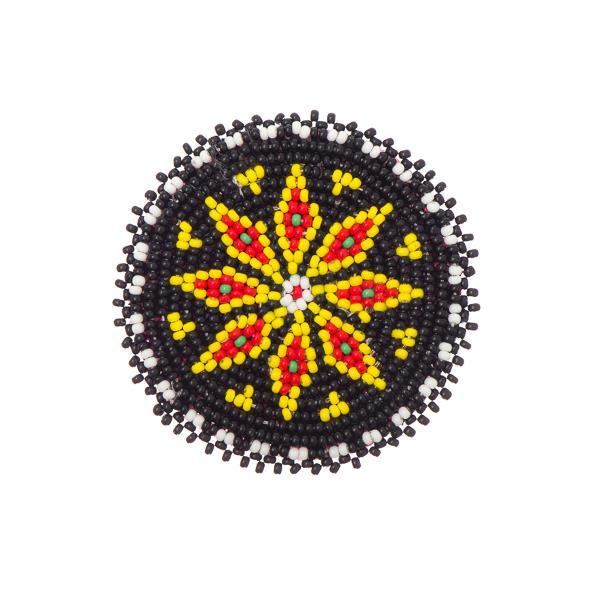 Beaded Rosettes
Beaded Rosettes
 Bells
Bells
 Cabochons
Cabochons
 Dolls & Acc.
Dolls & Acc.
 Dream Catcher Rings
Dream Catcher Rings
 Drum Making
Drum Making
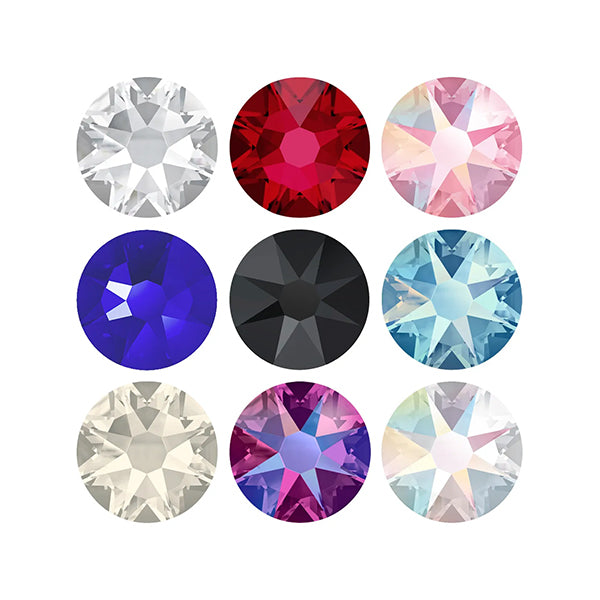 Flat Back Stones
Flat Back Stones
 Jingle Cones
Jingle Cones
 Mirrors
Mirrors
 Pipe Stems
Pipe Stems
 Rhinestone Banding
Rhinestone Banding
 Sequins
Sequins
 Sew On Stones
Sew On Stones
 Beading Foundation
Beading Foundation
 Crepe Soles
Crepe Soles
 Elastic Cord
Elastic Cord
 Fabric
Fabric
 Fringe
Fringe
 Ribbon
Ribbon
 Trim
Trim
 Bails
Bails
 Bolo Tie Acc.
Bolo Tie Acc.
 Bookmarks
Bookmarks
 Brooch & Bar Pins
Brooch & Bar Pins
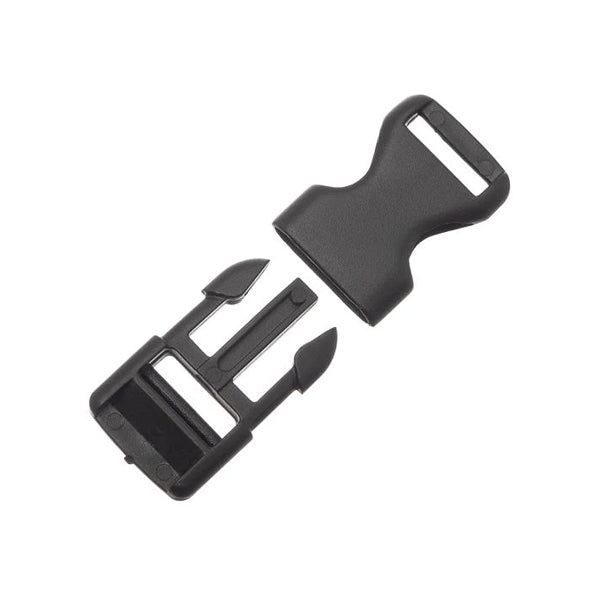 Buckles
Buckles
 Buttons
Buttons
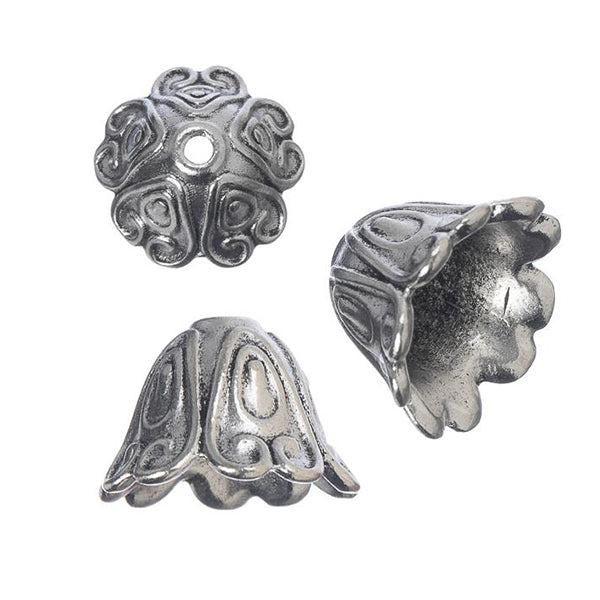 Caps & Cones
Caps & Cones
 Chain Extenders
Chain Extenders
 Clasps
Clasps
 Crimps & Ends
Crimps & Ends
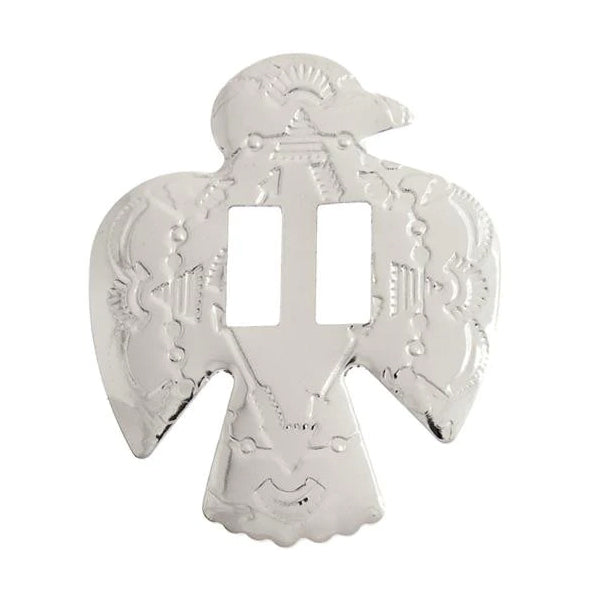 Conchos
Conchos
 Connectors
Connectors
 Earring Components
Earring Components
 Eyelets & Snaps
Eyelets & Snaps
 Findings Sets
Findings Sets
 Garment Studs
Garment Studs
 Hair Accessories
Hair Accessories
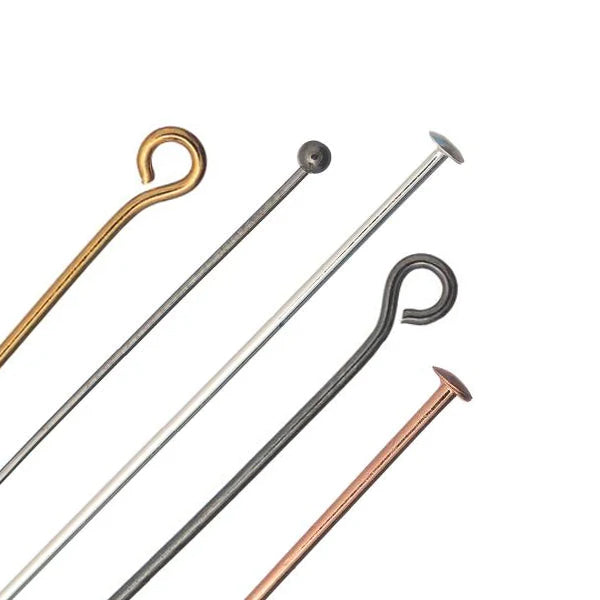 Head & Eye Pins
Head & Eye Pins
 Jewelry Parts
Jewelry Parts
 Jump & Split Rings
Jump & Split Rings
 Key Chain Parts
Key Chain Parts
 Mobile Phone Acc.
Mobile Phone Acc.
 Safety Pins
Safety Pins
 Wire Guards
Wire Guards
 Feathers
Feathers
 Furs & Animal Parts
Furs & Animal Parts
 Leather & Rawhide
Leather & Rawhide
 Cord
Cord
 Chain
Chain
 Leather & Suede Lace
Leather & Suede Lace
 Sinew
Sinew
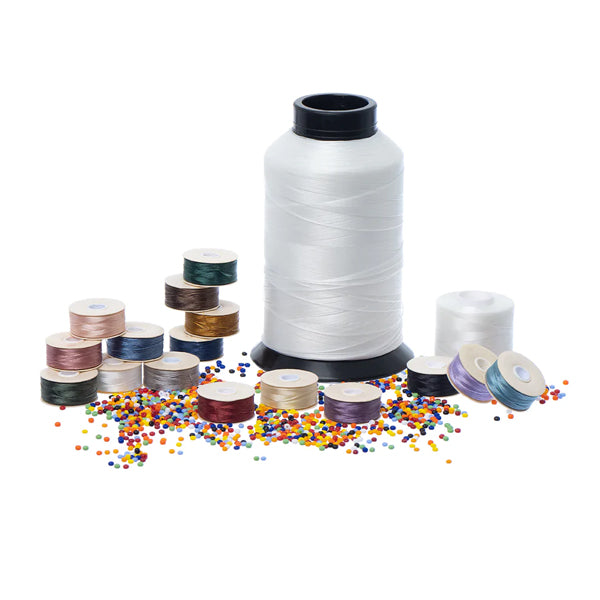 Thread
Thread
 Jewelry Wire
Jewelry Wire
 Memory Wire
Memory Wire
 Shaping Wire
Shaping Wire
 Bead & Craft Kits
Bead & Craft Kits
 Books
Books
 Patterns
Patterns
 Displays
Displays
 Gift Bags
Gift Bags
 Gift Boxes
Gift Boxes
 Jewelry Cards
Jewelry Cards
 Organizers
Organizers
 Tags, Labels & Stickers
Tags, Labels & Stickers
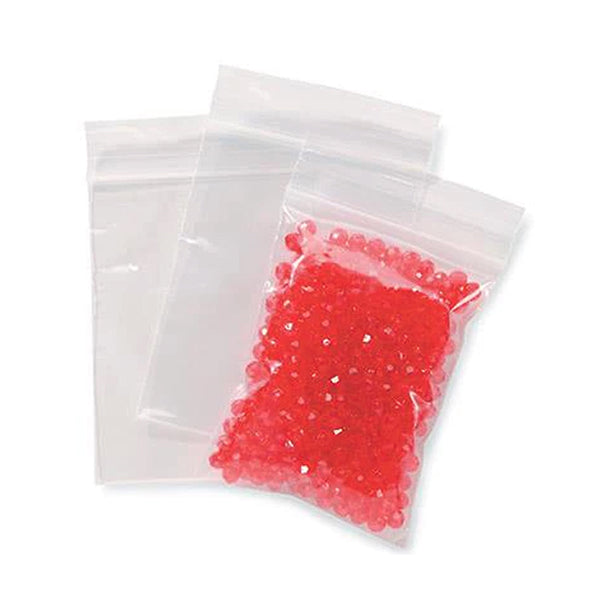 Zip Lock Bags
Zip Lock Bags
 Chakra
Chakra
 Healing Stones
Healing Stones
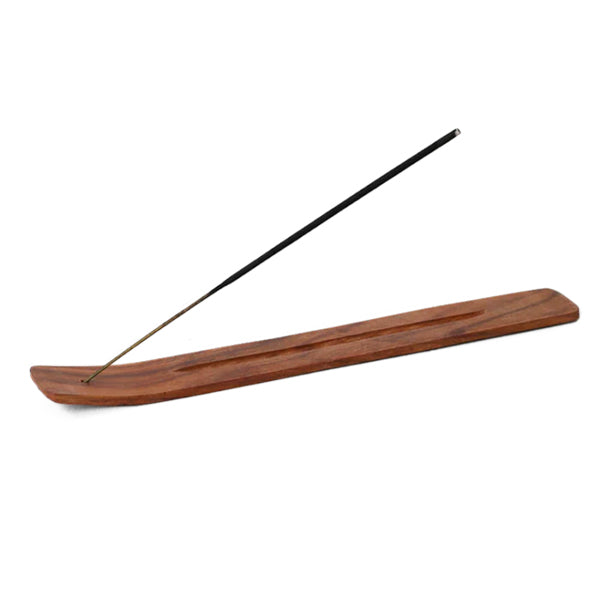 Incense & Holders
Incense & Holders
 Mala Beads & Acc.
Mala Beads & Acc.
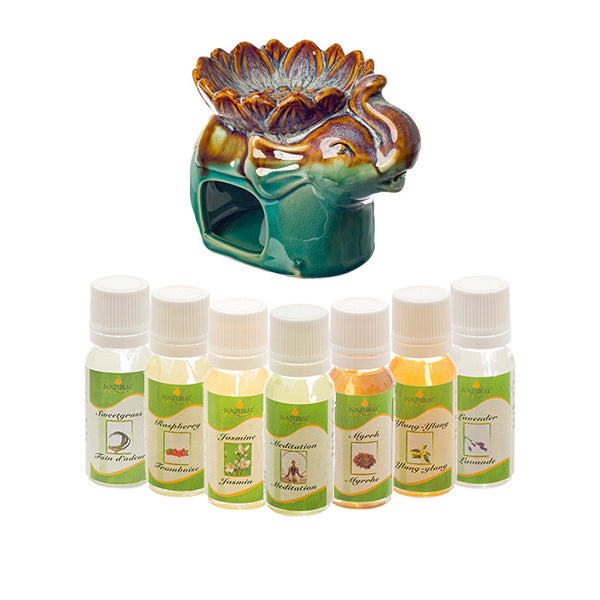 Oils & Burners
Oils & Burners
 Rocks & Minerals
Rocks & Minerals
 Smudging
Smudging















































































































